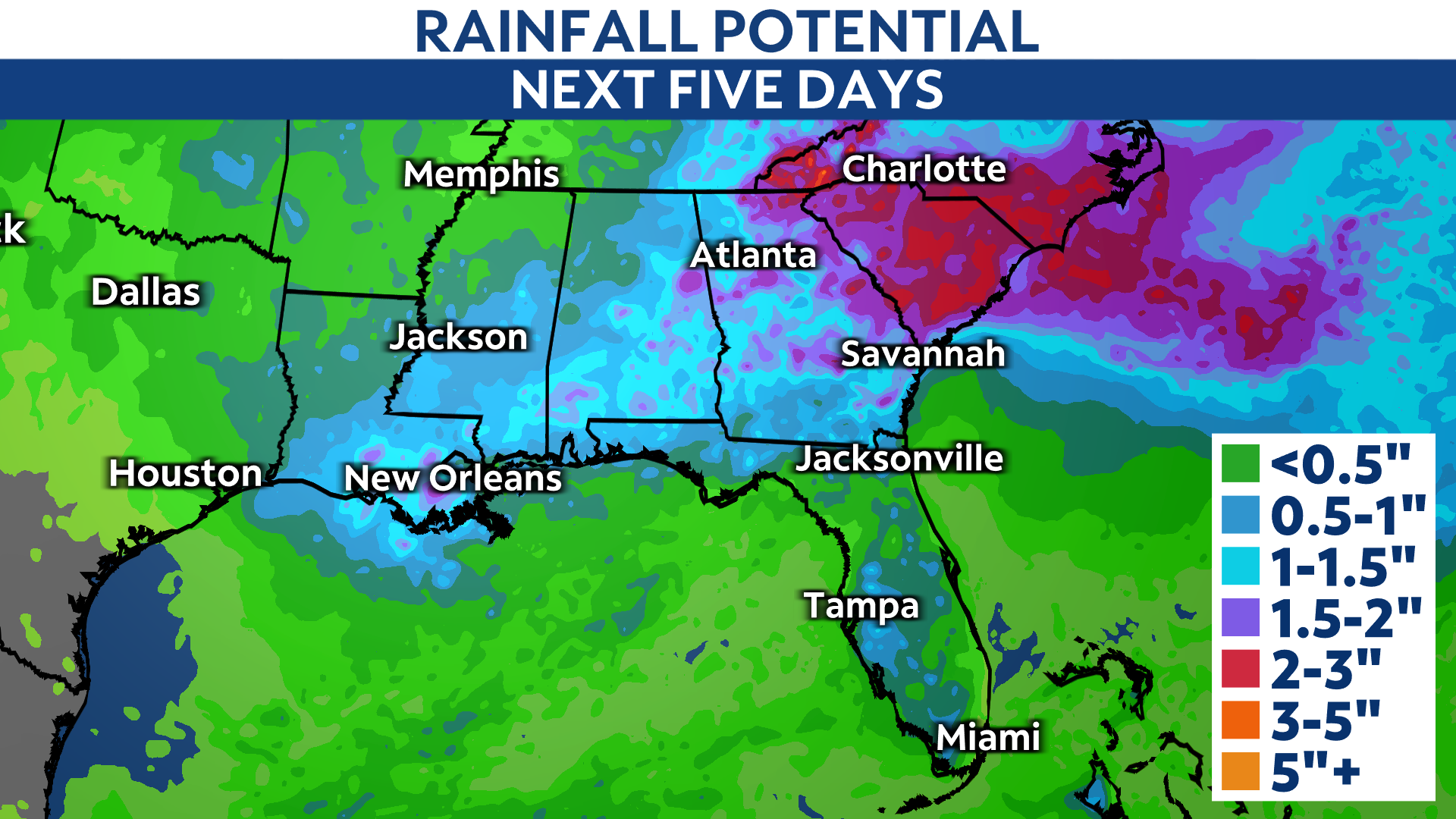Tropical Storm Ophelia made landfall near Emerald Isle, North Carolina, early Saturday morning. With this, the weather will continue to deteriorate up the East Coast this weekend as the storm tracks north.
A Hurricane Watch is in effect for coastal parts of the state.
After making landfall, Ophelia remains a strong tropical storm, producing maximum sustained wind speeds of 70 mph.
Regardless, its impacts will continue to spread up the East Coast as it tracks toward the north-northwest.
Tropical storm conditions, including heavy rain, gusty winds, rough surf and storm surge, will extend from North Carolina into the Mid-Atlantic through this weekend.
A Hurricane Watch is in effect for the coast of North Carolina from north of Surf City to Ocracoke Inlet.
Tropical Storm Warnings are in effect for most of the coast of the Carolinas, Virginia, Maryland and up to Delaware.

Coastal parts of North Carolina and Virginia will likely receive the most rain, with totals potentially ranging anywhere between 2 to 5 inches. Heavier totals are possible in some spots. These downpours will cause areas of flooding.
Locally heavy rain will spread into the Northeast, and we could see up to 2 inches fall, especially along the coast.

Dangerous storm surge will also be possible along the coast. Storm Surge Warnings include parts of North Carolina, Virginia and Delaware. Peak surge could reach up to 3 to 5 feet above ground level.
Ophelia formed off the East Coast on Friday, Sept, 22, becoming the fifteenth named storm of the 2023 Atlantic hurricane season.
We’re watching one other disturbance in the eastern Atlantic that has a high chance of developing over the next few days.
Check here for a look at the 2023 Atlantic hurricane season so far.
Our team of meteorologists dives deep into the science of weather and breaks down timely weather data and information. To view more weather and climate stories, check out our weather blogs section.


